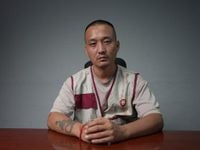In the heart of Kathmandu and across Nepal’s bustling cities, a wave of youthful energy has shaken the country’s political foundations to their core. The Gen Z-led protests, which erupted in September 2025, have not only forced the formation of an interim government but also signaled a decisive break from the traditional, party-driven politics that have long defined Nepal’s governance. What started as online grumbling about corruption, inequality, and government attempts to restrict social media quickly spilled onto the streets, transforming into mass demonstrations that would upend the nation’s leadership and set the stage for an uncertain political future.
According to Kathmandu Post, young demonstrators—rallying under the banner of “We will decide the country’s future”—mobilized through Discord, Instagram, and other digital platforms. They gathered in iconic public spaces like Maitighar, Ratna Park, and New Baneshwar, bringing together an unlikely coalition: bankers, taxi drivers, students, and the children of farmers. Unlike previous uprisings, this movement was leaderless and cut across social classes, rejecting the flags and slogans of established parties in favor of the national flag and a shared demand for change.
The protests reached a fever pitch on September 8, 2025, when footage surfaced of students being shot in their school uniforms—a moment that, as former banker Anil Keshary Shah told Kathmandu Post, “triggered nationwide outrage.” The next day, violence escalated dramatically. Police responded to demonstrators near the federal parliament with water cannons, tear gas, and, in a shocking turn, live ammunition. Protesters breached the parliament gates and set the entrance ablaze. By late September, the death toll had reached at least 74, making these protests the deadliest in Nepal since the 2006 pro-democracy movement, as reported by Hindustan Times.
Amid this turmoil, then-Prime Minister KP Sharma Oli resigned on September 9. He later resurfaced, denying any responsibility for the violence. “I have not given orders to shoot at the Gen Z protesters during the agitation,” Oli insisted at a public event in Bhaktapur, as quoted by Hindustan Times. His resignation paved the way for the appointment of former Chief Justice Sushila Karki as interim prime minister—a move that was remarkable not just for her outsider status, but because she was elected by Gen Z protesters themselves, using Discord to coordinate their choice.
The Gen Z uprising has been described by political analyst Jhalak Subedi as “not guided by ideology but by disgust at corruption and authoritarian tendencies.” This sentiment was echoed by Gen Z representative Bikas Yadav, who declared, “This movement has established that anyone in office will now think twice before committing wrongdoing.” Yadav expressed hope that the interim government, though unlikely to eliminate corruption in just six months, could at least lay the groundwork for real reform. Yet he also voiced frustration that the interim Cabinet failed to include any Gen Z representatives, questioning the government’s commitment to true inclusivity.
Rakshya Bam, another Gen Z activist, put it plainly in an interview with Kathmandu Post: “We pay taxes, but we get nothing in return. Leaders’ families live in luxury while citizens suffer.” These words capture the deep sense of betrayal and urgency that has fueled the protests. The movement’s demands are immediate—good governance, transparency, and jobs—not lofty ideological promises. As youth leader Kiran BK explained, “They are literate in politics, but in their own language. They want good governance, not big ideological words.”
Technology has played a defining role in both the organization and ethos of the protests. Political analyst Lokraj Baral noted, “Gen Z is shaped more by information technology than by political texts.” Platforms like Discord and Instagram have not only allowed activists to mobilize rapidly but have also enabled them to gather policy demands from across the country, ensuring that “every voice of the Nepalese people is heard,” in the words of protest leader Sudan Gurung.
Gurung, who became the face of the grassroots uprising, announced on September 27 that he would run in Nepal’s March 2026 general elections. In an exclusive interview with Al Jazeera’s Start Here, Gurung described his movement as a “movement for change” rather than a traditional political party. “They have dragged us into politics,” he said, referring to the old guard of “selfish” and “corrupt” politicians. “If it’s politics they want, that’s what they’ll get. We will be running for the next election because we are not going to back down now.”
Gurung’s movement has pledged to go beyond anti-corruption, with plans to boost Nepal’s tourism sector and strengthen relations with neighboring India and China—always, he insists, “without external interference.” He has also called on interim Prime Minister Sushila Karki to expedite investigations into corruption and the killings of protesters, hoping to prevent discredited old political figures from contesting the upcoming elections. “We’ll be sure that the investigation is done properly, on time, so that they won’t participate [in the elections],” Gurung said. Despite attempts to intimidate him, he remains defiant: “I’m not scared … just killing me won’t do anything. I need to save my nation because it’s now or never.”
The movement’s leaderless structure and reliance on digital mobilization have presented both strengths and challenges. On one hand, the absence of hierarchical leadership has made the protests difficult to suppress or co-opt. On the other, concerns linger about sporadic violence and the lack of a clear roadmap as the country approaches elections under the interim government. Political analysts warn that the biggest test will be whether the street energy can be channeled into the ballot box—whether, as Anil Keshary Shah put it, the movement can “turn street voices into political and institutional power.”
The protests have also shattered the stereotype that Gen Z is politically indifferent or apathetic. Instead, this generation has demonstrated a sophisticated understanding of politics—albeit on its own terms, shaped more by memes and hashtags than by manifestos or party platforms. Their demands are democratic and pragmatic, not calls for a return to monarchy or military rule, as has sometimes been seen elsewhere in South Asia.
As Nepal stands at this crossroads, the outcome remains uncertain. Will the interim government and upcoming elections mark the beginning of a new era of accountability and transparency, or will the cycle of youth-led revolt continue? The answer, it seems, will depend on whether the energy and ideals of the Gen Z movement can be translated into lasting political and institutional change. For now, one thing is clear: the youth of Nepal have made their voices heard, and the country’s political establishment will never be able to ignore them again.




